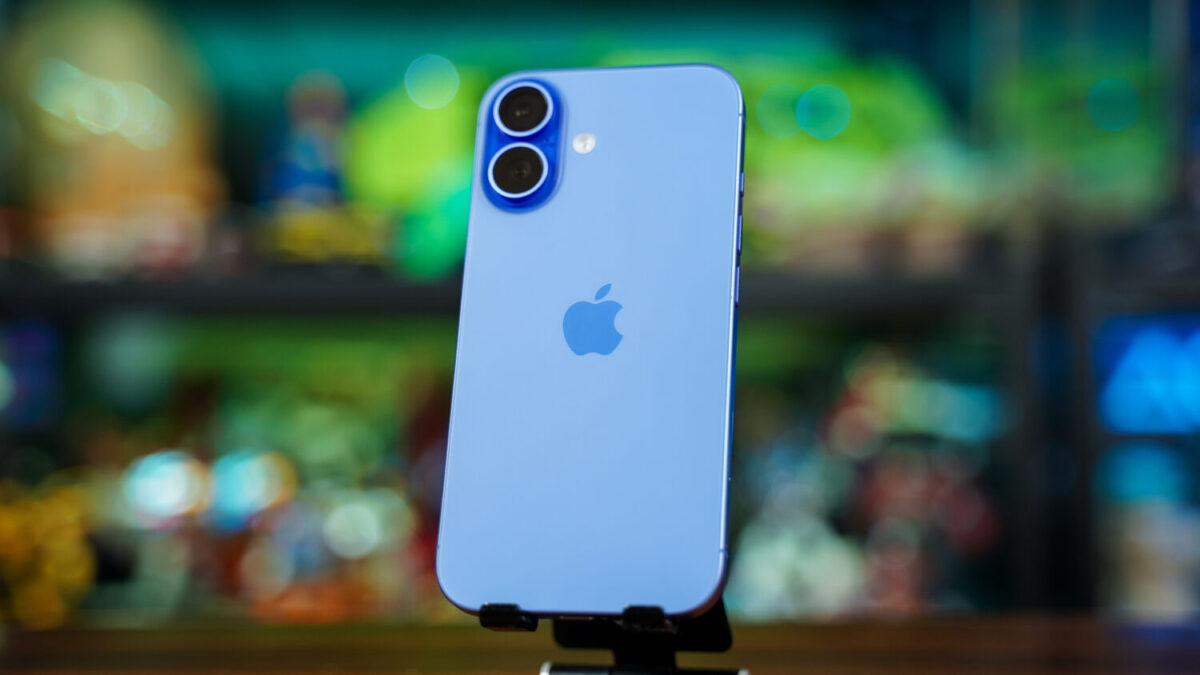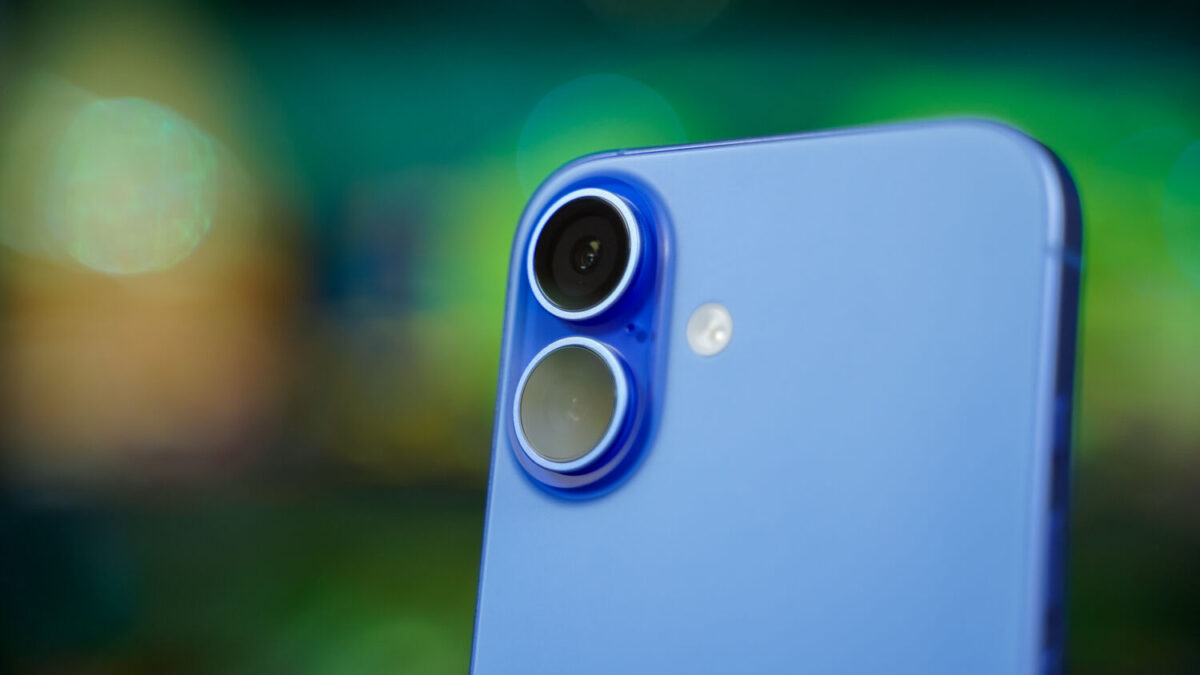With the rise and industry-wide adoption of the three-model flagship smartphone lineup, everyone is no stranger to the drill. The base model opens the gateway to a next-gen upgrade, often joined by a higher-end, beefier counterpart, and a more wallet-friendly but less powerful option. For Apple, the formula is a little different – there’s the standard iPhone and its bigger Plus sibling, plus (hah) two other souped-up iterations, the Pro and Pro Max.

The differences between all four members may be more incremental than substantial, but each brings its own strengths that cater to various needs and preferences. In a slight departure from usual expectations, the iPhone 16 has caught up to the Pro lineup, inheriting standard Pro features including the action button and Dynamic Island, previously available only on the premium models.
This time, a brand-new Camera Control button, located alongside the Power button, serves as the highlight, allowing users to quickly snap a shot or access various settings like zoom through the light touch of a finger, no matter the model. The lack of a price hike is a welcome bonus – the device starts at S$1,299 for the 128GB storage option, the same as before, and paints an enticing, appealing image with small yet meaningful tweaks. As with each refreshed range, however, there isn’t much reason to make the leap for those running last year’s models, especially since the company’s latest feature set, Apple Intelligence, has yet to mature fully. Even so, the iPhone 16 is a great entry point into the Apple ecosystem, offering more value than what regulars have come to expect.

The iPhone 16 bears the continued minimalist flair that has become synonymous with the Cupertino giant, sporting a brighter colour splash than its predecessors: pink, teal, and ultramarine, alongside the standard black and white picks. The bold, vibrant touch is a nice change from the pastel strokes of the previous lineup, with the hues popping out when held at a certain angle. It’s no polished and gorgeous titanium finish like its Pro siblings, but oozes stylish elegance all the same.
In the hand, the handset sits snugly and feels comfortable to hold – particularly for individuals with smaller hands. It weighs 170 grams, a negligible 1g lighter from last year’s 171 grams, which facilitates easier one-handed use, and is made out of aerospace-grade aluminium that marries durability with a lightweight form factor (a screen protector or phone case still comes highly recommended). Along its slim frame are the action button and volume rocker on the left, as well as the home and Camera Control buttons on the right, and a USB-C port at the base.


The biggest design tweak here is the rear camera setup. Where the front display retains the signature pill-shaped notch and Dynamic Island feature, the backside now houses a vertical cutout instead of the diagonal arrangement used for the past three years. Contrary to the Pro series, the iPhone 16’s viewing tech remains unchanged, boasting a 6.1-inch Super Retina XDR screen with a 2,556 x 1,179 resolution.

As expected, the OLED experience makes for a delightful spectacle. Apple’s line of devices has always been known for their colour accuracy, and it continues into this latest generation with a natural balance of contrast and saturation, resulting in visually fetching images. The quality is no less impressive, delivering sharp clarity and great detail in the trailer for Arcane Season 2 and an entire episode of Dandadan. Watching Only Murders in the Building on Disney+ also yielded deep, full blacks, with the only bone of contention being the 60Hz refresh rate.
Indeed, the lack of a specs bump is a little disappointing, considering that the Google Pixel 8a and other lower-end phones have adopted a refresh rate of 120Hz or higher, even. Some may call it nitpicking, but the difference is obvious when coming over from another device with higher refresh rates – despite falling one generation behind as a standard, non-Pro-equivalent model, the Samsung Galaxy S23 has an edge in smoother, slicker animation. The untapped upgrade is a missed opportunity, as the iPhone 16 promises powerful gaming capabilities, courtesy of the all-new A18 chip.
On paper, it touts 30 percent CPU performance than its predecessor and a 40 per cent increase in GPU processing. It also runs hardware-accelerated ray tracing, and while these figures are difficult to verify, the Zenless Zone Zero, Genshin Impact, Call of Duty: Warzone, and PUBG Mobile experience proved enjoyable. As noted in our dedicated gaming test, there were little to no frame rate drops across all titles, even with the more GPU-intensive nature of the former two. More impressive are its thermal management capabilities, effectively and consistently keeping things cool under crunch.
The beefier processor translates into enhanced artificial intelligence (AI) performance for everyday functionality. Termed Apple Intelligence, the software served as the missing link and was only available in beta during the launch of the iPhone 16 series. The incomplete package was, and still is, a bummer (a second wave of release is set for December), but the official rollout of iOS 18.1 brings some nifty tools that make the upgrade feel more complete.
For starters, the redesigned Photos app – which takes a bit of getting used to – now supports natural language prompts, allowing users to easily locate certain images in seconds. It’s especially handy for users with disorganised galleries (yours sincerely included), and works like a charm in a pinch, though not all the time. Generic inputs can result in inconsistent search, as seen from typing ‘Magic the Gathering’, which accurately pulls up photos bearing the keywords, and ‘Sonic’, as in Sega’s signature hedgehog, that lumped in a video showing the words ‘Sonic Playground’ with images of the mascot during this year’s Tokyo Game Show. Keying in ‘Sonic the Hedgehog’ doesn’t do the job, displaying no results.












As a journalist, transcription capabilities are always welcome. Apple has taken a leaf out of the Android book to incorporate the feature into the Notes and Phone apps, such that phone calls can be recorded and turned into notes. Everyone on the call will be notified of the recording, with iOS 18.1 also able to transcribe voice recordings. It’s hardly perfect – accents and dialects won’t often be picked up, including Singaporean speech patterns, and fast speakers are likely to have their words strung together or left out.
















The edit functionality does offer some resolution, but there’s a catch as unlike its Android counterparts, audio files are saved separately on Notes, so native recordings can only be transcribed after being uploaded there. Apple is undoubtedly late to the party here (still, better late than never), even if it deserves credit for streamlining the organisational process by generating summaries and adding collapsible section headers, as well as the option to change text colour.
Similarly, most of its other Apple Intelligence features ship with chinks in their armour. Clean Up, designed to remove unwanted objects from images, proves capable of doing as advertised, but falls behind Google’s mastery in the craft. Working with a simple or plain background produces the best results, whereas too much noise or subject volume dulls some of its shine. Take, for instance, a photograph of the crowd at Tokyo Station – zooming in on the lower left where an individual was removed reveals distorted, jagged edges, though hardly visible at first glance. Erasing reflections from a mirror surface proved successful, however.


The ability to schedule texts, meanwhile, brings a practical touch. It’s easy to use, and all users have to do is tap the ‘+’ button in Messages and set their desired date and time up to two weeks in advance. With iOS 18.1, text conversations can also be summarised alongside emails, notifications, and Safari web pages, but to a less consistent effect. Notification digests, in particular, suffer most from awkward and at times, hilariously erroneous phrasing, especially as they pile up.
Writing Tools isn’t all magic, either. As a rule of thumb, AI-generated text should only be used as a base, and the same runs true here. While quick access to proofreading and tonal changes offers certain perks, such as accurately detecting spelling and grammatical mistakes or turning an informal piece of work into a professional-sounding note, the Rewrite button is a lacklustre attempt at paraphrasing. The way it substitutes words for different synonyms oozes structured rigidity that removes all traces of personality, which raises concerns about individual expression.
As mentioned earlier, the full features of Apple Intelligence will be released in stages, so there’s more to come later this year and beyond. Existing features are expected to be polished further as well, and again, this contributes a hit to the appeal factor of the iPhone 16 series – more so since the AI capabilities hardly break any new ground. Rather, they are more like responses, and it remains to be seen if Visual Intelligence, a personal highlight set to be a latest-gen exclusive, is able to add more weight to the overall experience when it rolls out as part of iOS 18.2. Serving as the company’s answer to Google Lens, it lets users quickly look up information by pointing the camera at a subject, and can be integrated with any app or serving running on the device.

On the note of cameras, the iPhone 16 boasts a 48-megapixel (MP) main shooter and a 12MP ultrawide camera like before, except that macro photography is now available on a non-Pro model for the first time. The latter also comes equipped with autofocus and a slightly faster lens, delivering better images in ill-lit or darker environments, though there’s still a noticeable flare from overhead lights or other sources of illumination.
General shots continue to impress, per Apple tradition. Sharp detail, balanced high dynamic range (HDR) levels, and natural, vibrant hues are all par for the course across different kinds of landscapes, with close-up images showcasing crisp clarity and distinct bokeh separation. The lack of a dedicated macro lens doesn’t faze the flagship much, proving sufficiently competent for casual users despite a slight quality dip in dimmer settings at 2x zoom. As usual, the base model lacks a telephoto lens, an otherwise standard offering on rival flagships that’s reserved for the Pro and Pro Max iterations.

Camera Control, the biggest star of this latest-gen lineup, turns out to be quite the mixed bag. While its shortcut functionality is useful in the right situations, adjusting supported settings via the button can be a finicky affair. There are four primary actions at play – a click, which opens the Camera app, a second one that activates the shutter and snaps a photo, a long press to start and stop video recording, and a double soft-tap for accessing zoom, aperture, and Photographic Styles, each tweaked through finger swipes. The learning curve takes some getting used to with a mix of presses and depresses, making it difficult to accurately gauge the exact amount of pressure and swiping force required. Chances are, it’d be faster to manually change these settings on the display itself.

It doesn’t help that the button is awkwardly positioned, too. Camera Control feels more intuitive in landscape orientation, with the tactile sensation resembling the touch of a physical camera, but it’s a little too low for shooting vertical content for social media and the like. There’s also the new Photographic Styles feature, allowing users to adjust the colour, tone, and mood of images on the fly or even after taking the shot. Think filters, but managed through an accessible on-screen touchpad.
Outside of photography, the iPhone 16 remains a reliable everyday carry. The A18 prowess ensures snappy performance throughout use, from streaming videos and running editing software like Capcut to switching between various apps. Battery life won’t be a concern, either – the device lasts around 13 hours on moderate load and should be enough to get by the heaviest of normal working days. Naturally, gaming and other GPU-intensive tasks will result in a faster drain, but a quick 30-minute charge easily refuels its tank past the 50 percent mark. USB-C support is, of course, a plus.

At a time when iterative changes are the norm, Apple sets itself apart by closing the gap between its Pro and non-Pro lineup. The iPhone 16 is its most powerful base model to date, packing premium features at a mainstream price that gives it an edge in value over the 16 Plus, with the only differences being a bigger display and battery capacity at a higher cost. While the experience isn’t quite complete without the full iOS 18 rollout, the device’s all-rounded camera system, impressive hardware performance, and AI touch-ups offer a satisfying time. It isn’t the most shiny or exciting toy, and that’s perfectly fine – functionality is always king, after all, and there’s no shortage of that here.
GEEK REVIEW SCORE
Summary
A Pro-adjacent in all but name, the iPhone 16 presents a strong case to embrace its latest tech, as it seeks to marry performance with value amid some drawbacks.
Overall
8.8/10-
Aesthetics - 9.5/10
9.5/10
-
Build Quality - 9/10
9/10
-
Performance - 8.5/10
8.5/10
-
Value - 8.5/10
8.5/10
-
Geek Satisfaction - 8.5/10
8.5/10













